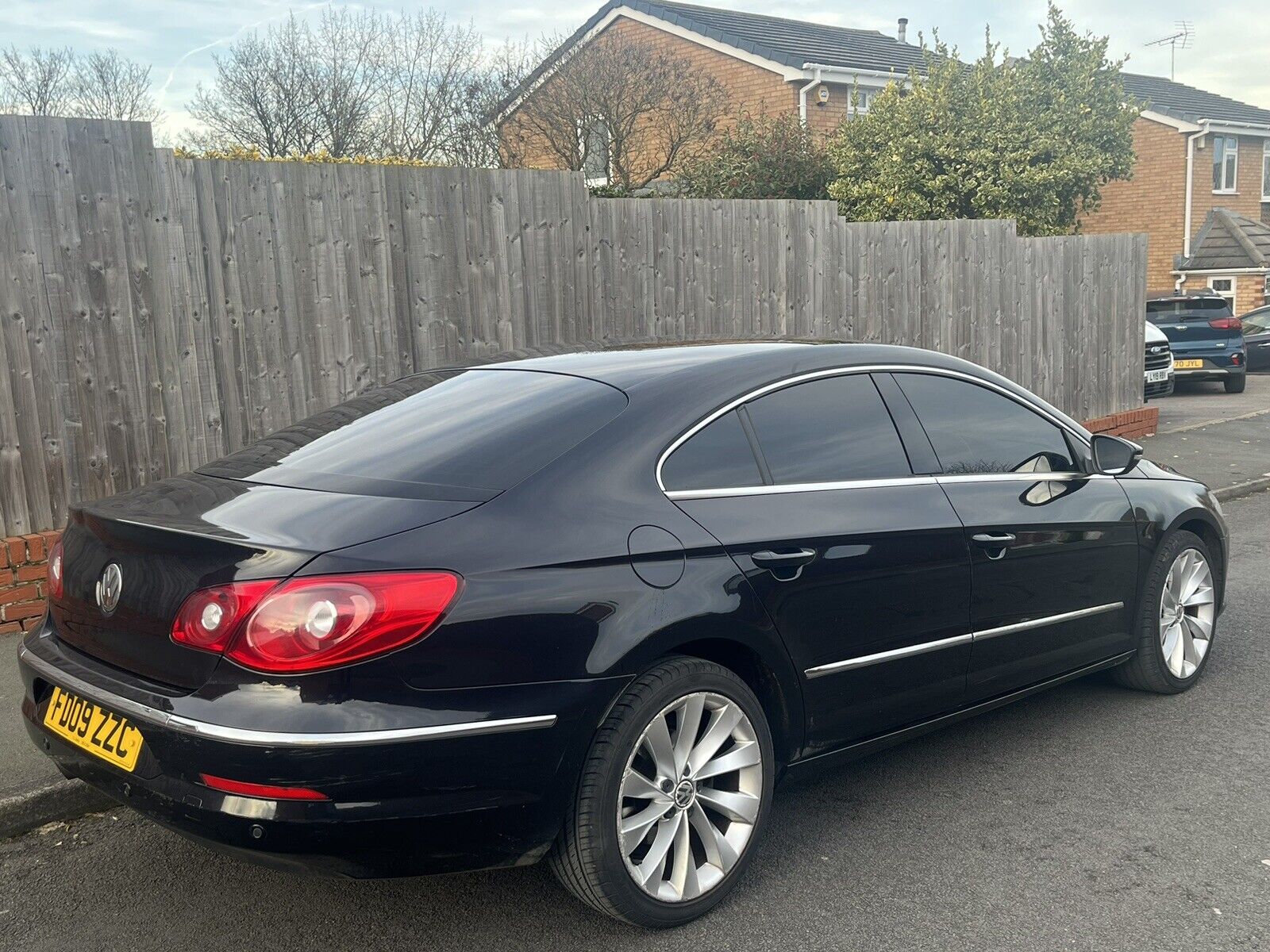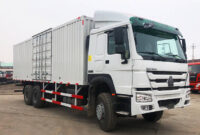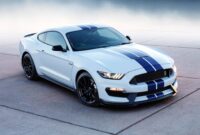Used Honda Ridgeline Pickup Trucks For Sale: Your Comprehensive Guide pickup.truckstrend.com
The Honda Ridgeline occupies a unique and often misunderstood niche in the bustling pickup truck market. Unlike traditional body-on-frame trucks, the Ridgeline boasts a unibody construction, sharing its platform with Honda SUVs like the Pilot and Passport. This innovative design choice grants it a distinct advantage in terms of ride comfort, handling, and interior refinement, making a used Honda Ridgeline an incredibly appealing option for buyers seeking the versatility of a truck without sacrificing the driving dynamics of an SUV.
For sale, these pre-owned Ridgelines offer an exceptional blend of Honda’s legendary reliability, innovative utility features, and surprisingly capable performance. Whether you’re a weekend warrior, a small business owner, or a family in need of a practical daily driver with occasional hauling capabilities, a used Ridgeline could be the perfect fit. This comprehensive guide will delve into everything you need to know about purchasing a used Honda Ridgeline, from understanding its generations and unique features to navigating the buying process and addressing common questions.
Used Honda Ridgeline Pickup Trucks For Sale: Your Comprehensive Guide
Why Choose a Used Honda Ridgeline? The Unibody Advantage
Opting for a used Honda Ridgeline comes with a host of compelling benefits that set it apart from its truck brethren. Its unibody construction is the primary differentiator, offering advantages typically found in passenger vehicles:
- Superior Ride Comfort and Handling: The fully independent suspension and unibody design provide a remarkably smooth, car-like ride. It handles more like a large SUV than a traditional truck, making long commutes or family road trips far more enjoyable.
- Honda Reliability and Longevity: Honda’s reputation for building durable, long-lasting vehicles is well-deserved. Ridgelines are known to easily surpass 200,000 miles with proper maintenance, offering excellent long-term value.
- Innovative Utility Features: The Ridgeline boasts several class-exclusive features that enhance its practicality, such as the In-Bed Trunk® and the Dual-Action Tailgate. These aren’t just gimmicks; they genuinely improve usability.
- Practical Fuel Efficiency: While not a fuel sipper, the Ridgeline’s V6 engine and lighter unibody design generally yield better fuel economy figures than many V8-powered, full-size trucks.
- Excellent Safety Ratings: Both generations of the Ridgeline have consistently earned high safety ratings, often due to their robust construction and advanced safety features (especially in later models).
- Strong Resale Value: Thanks to its reputation for reliability and unique appeal, the Ridgeline tends to hold its value well, which is beneficial when considering a future trade-in or sale.

Understanding the Generations: First vs. Second
The Honda Ridgeline has evolved significantly across its two generations, each offering distinct characteristics. Knowing the differences is crucial when browsing used models.
First Generation (2006-2014)
The original Ridgeline made its debut in 2006, instantly recognizable by its unconventional, almost futuristic styling, often referred to as a "flying buttress" design. It featured:
- Engine: A 3.5-liter V6 engine (247-250 horsepower).
- Transmission: A 5-speed automatic transmission.
- Drivetrain: Standard Variable Torque Management 4-wheel drive system (VTM-4), which is essentially a sophisticated all-wheel-drive system.
- Key Features: In-Bed Trunk, Dual-Action Tailgate, integrated bed lighting, composite scratch-resistant bed.
- What to Look For: Due to their age, inspect for rust, especially around the rear wheel wells and underbody. Ensure the transmission fluid has been regularly changed, as this is vital for longevity. Check for proper function of the tailgate and trunk release mechanisms.
Honda paused Ridgeline production for the 2015 and 2016 model years, creating a distinct break before the second generation launched.
Second Generation (2017-Present)
The second-generation Ridgeline, launched in 2017, adopted a more conventional truck aesthetic while retaining its unibody architecture and innovative features. This redesign addressed some of the styling criticisms of the first generation and brought significant technological updates.
- Engine: A more powerful 3.5-liter V6 engine (280 horsepower).
- Transmission: Initially a 6-speed automatic, upgraded to a 9-speed automatic transmission for 2020 models and newer.
- Drivetrain: Available Intelligent Variable Torque Management (i-VTM4®) all-wheel-drive system (standard on higher trims, optional on lower trims, with front-wheel drive standard on base models).
- Key Features: Retained In-Bed Trunk and Dual-Action Tailgate, but added available features like Apple CarPlay/Android Auto, LED headlights, an in-bed audio system, and the Honda Sensing® suite of safety technologies (adaptive cruise control, lane-keeping assist, collision mitigation braking).
- What to Look For: These models are newer, so major mechanical issues are less common. Focus on checking infotainment system functionality, wear and tear on interior components, and ensuring all Honda Sensing features are operational if equipped. Verify service records, especially for transmission fluid changes.
Key Features That Set the Ridgeline Apart
Regardless of the generation, several signature features make the Ridgeline uniquely practical:
- In-Bed Trunk®: A lockable, drainable storage compartment located beneath the bed floor. Perfect for tools, groceries, or even ice for a tailgate party.
- Dual-Action Tailgate: This ingenious tailgate can be opened conventionally by dropping down, or it can swing open to the side like a door, providing easier access to the bed or the In-Bed Trunk.
- Standard All-Wheel Drive (First Gen) / Available i-VTM4 AWD (Second Gen): Honda’s advanced AWD system provides excellent traction in various conditions, from slippery roads to light off-road trails. It intelligently distributes torque to the wheels that need it most.
- Smooth Independent Suspension: Both front and rear independent suspension contribute significantly to the Ridgeline’s comfortable ride and responsive handling, differentiating it from the harsher ride of many traditional trucks.
- Spacious and Versatile Cabin: The Ridgeline offers a surprisingly roomy interior with comfortable seating for five. The rear seats fold up in a 60/40 split, revealing ample storage space for larger items that need to be kept dry and secure.
What to Look For When Buying a Used Ridgeline
Purchasing any used vehicle requires diligence. Here’s what to prioritize when inspecting a used Honda Ridgeline:
- Service History: This is paramount. Look for a complete record of oil changes, transmission fluid changes, brake services, and any major repairs. A well-maintained Ridgeline is a reliable Ridgeline.
- Rust Inspection (Especially 1st Gen): Carefully check the frame rails, rocker panels, wheel wells, and bed supports for rust. While the composite bed itself won’t rust, the underlying steel structure can.
- Engine and Transmission: Listen for unusual noises during startup and driving. Check for fluid leaks. During a test drive, pay attention to smooth, timely shifts from the transmission. For 1st gen models, ensure the transmission doesn’t "flare" between shifts.
- Tires and Brakes: Inspect tire tread depth and even wear. Check brake pad thickness and listen for squealing or grinding during braking.
- Electrical Components: Test all lights, windows, locks, infotainment system, climate control, and any advanced safety features (Honda Sensing).
- Undercarriage: Look for damage from off-roading or impacts, indicating potential issues with suspension components or the exhaust system.
- Test Drive: Drive the truck on various road surfaces, including highways and city streets. Test acceleration, braking, steering, and listen for any abnormal sounds from the engine, transmission, or suspension.
- Pre-Purchase Inspection (PPI): Always, always, always get a pre-purchase inspection from an independent mechanic you trust. They can identify issues you might miss and provide peace of mind.
- Recall Check: Use the VIN to check for any outstanding recalls on the National Highway Traffic Safety Administration (NHTSA) website.
Where to Find Used Honda Ridgelines For Sale
Several avenues exist for finding a used Ridgeline:
- Dealerships: New car dealerships (especially Honda dealers) often have used Ridgelines, sometimes offering Certified Pre-Owned (CPO) options with extended warranties. Used car dealerships also carry a wide variety. While prices might be higher, you often get more assurance and financing options.
- Online Marketplaces: Websites like AutoTrader, CarGurus, Edmunds, and Cars.com allow you to filter by make, model, year, and location. Facebook Marketplace and Craigslist can also yield private seller listings, often at lower prices.
- Private Sellers: Buying directly from an owner can sometimes lead to better deals, as you cut out the dealer’s markup. However, you’ll have less recourse if issues arise, making a PPI even more critical.
Negotiating and Financing Your Purchase
Once you’ve found a Ridgeline you like, it’s time to negotiate.
- Research Market Value: Use resources like Kelley Blue Book (KBB.com) and NADAguides.com to determine the fair market value based on the year, mileage, trim, and condition.
- Set a Budget: Don’t just consider the purchase price. Factor in insurance, registration, potential repairs, and ongoing maintenance.
- Get Pre-Approved for Financing: If you need a loan, get pre-approved by your bank or credit union before visiting a dealership. This gives you leverage and a clear understanding of your interest rates.
- Negotiate Based on Inspection: If your PPI reveals issues, use them as leverage to negotiate a lower price or request the seller address the repairs.
- Be Prepared to Walk Away: There are many used Ridgelines out there. Don’t feel pressured to buy if the deal isn’t right.
Potential Challenges and Solutions
While the Ridgeline is an excellent truck, it’s important to be aware of its unique characteristics:
- "Not a Real Truck" Perception: Some traditional truck enthusiasts dismiss the Ridgeline due to its unibody construction and lower max towing/payload capacities compared to full-size body-on-frame trucks.
- Solution: Understand its niche. The Ridgeline is perfect for those who need a versatile open bed, light-to-medium towing (up to 5,000 lbs), and a comfortable daily driver, rather than extreme heavy hauling.
- Higher Initial Cost (New & Used): Honda’s premium branding and reliability often translate to a slightly higher price tag, even on the used market.
- Solution: Consider this an investment in lower long-term ownership costs due to Honda’s proven durability and resale value.
- Limited Aftermarket Customization: Compared to popular full-size trucks, the Ridgeline has fewer aftermarket parts and accessories available for extreme modifications.
- Solution: While specialized parts are less common, essential accessories like tonneau covers, bed liners, and basic suspension lifts are readily available.
Estimated Used Honda Ridgeline Price Ranges
Prices for used Honda Ridgelines vary significantly based on year, mileage, trim level, condition, and geographic location. The following table provides a general estimate for models in good condition.
| Generation | Model Years | Estimated Price Range (USD) | Key Features/Notes |
|---|---|---|---|
| First Gen | 2006-2008 | $5,000 – $10,000 | Original styling, 5-speed auto, VTM-4 AWD. Lower end for higher mileage/older condition. Rust inspection critical. |
| First Gen | 2009-2011 | $8,000 – $14,000 | Minor updates, still 5-speed auto. Good value for money if well-maintained. |
| First Gen | 2012-2014 | $10,000 – $18,000 | Later models of the first generation, often with lower mileage and better features. Still excellent value. |
| Second Gen | 2017-2019 | $20,000 – $30,000 | Redesigned exterior, 6-speed auto, modern tech. Early second-gen models offer great value for newer features. |
| Second Gen | 2020-2021 | $28,000 – $38,000 | Introduced 9-speed auto, more standard Honda Sensing features. Strong resale value. |
| Second Gen | 2022-Present | $35,000 – $45,000+ | Latest models, often with low mileage. Command premium prices but offer latest tech and less wear. |
Note: These are general estimates. Actual prices will vary. Higher trims (e.g., RTL-E, Black Edition) and lower mileage vehicles will command prices at the higher end of the range.
Frequently Asked Questions (FAQ) About Used Honda Ridgelines
Q: Is the Honda Ridgeline good for towing?
A: Yes, within its limits. Both generations of the Ridgeline are rated to tow up to 5,000 pounds when properly equipped. This is sufficient for most small to medium trailers, boats, ATVs, and campers, but less than full-size body-on-frame trucks.
Q: What is the typical lifespan of a Honda Ridgeline?
A: With proper maintenance, Honda Ridgelines are known to last well over 200,000 miles, and many owners report reaching 300,000 miles or more. Regular oil changes, transmission fluid changes, and timely repairs are key.
Q: Are parts for the Ridgeline expensive?
A: Honda parts are generally reasonably priced and widely available, especially given the Ridgeline shares many components with popular Honda SUVs like the Pilot and Odyssey. Maintenance costs are typically on par with other large SUVs or mid-size trucks.
Q: Does the Honda Ridgeline have 4WD?
A: The first generation came standard with VTM-4 (Variable Torque Management 4-wheel drive), which functions as a capable all-wheel-drive system. The second generation offers an available Intelligent Variable Torque Management (i-VTM4®) AWD system, which is also highly effective in various conditions. Neither is a traditional low-range 4×4 system found in hardcore off-road trucks, but they provide excellent traction for most everyday needs and light off-roading.
Q: What’s the best year to buy a used Honda Ridgeline?
A: This depends on your budget and priorities.
- For maximum value and unique styling, a well-maintained late first-generation model (2012-2014) is a great choice.
- For modern technology, improved fuel economy, and more conventional truck looks, a second-generation model (2017-present) is ideal. Models from 2020 onward benefit from the smoother 9-speed transmission and standard Honda Sensing.
Q: Is the In-Bed Trunk waterproof?
A: The In-Bed Trunk is designed to be water-resistant and has drain plugs, making it ideal for storing wet gear or using it as a cooler. While not hermetically sealed, it protects contents from most rain and splashes.
Conclusion
The used Honda Ridgeline stands as a compelling choice in the pickup truck market, offering a unique blend of utility, comfort, and reliability that is hard to match. Its innovative unibody design provides a driving experience akin to an SUV, while features like the In-Bed Trunk and Dual-Action Tailgate deliver practical functionality for a wide range of tasks.
Whether you’re drawn to the distinctive character of the first generation or the refined modernity of the second, a pre-owned Ridgeline represents excellent value. By understanding its unique attributes, conducting thorough research, and performing diligent inspections, you can confidently acquire a versatile and dependable truck that will serve you well for many years to come. For those who need truck capability without the compromises of a traditional body-on-frame design, the used Honda Ridgeline truly is an intelligent and satisfying choice.


